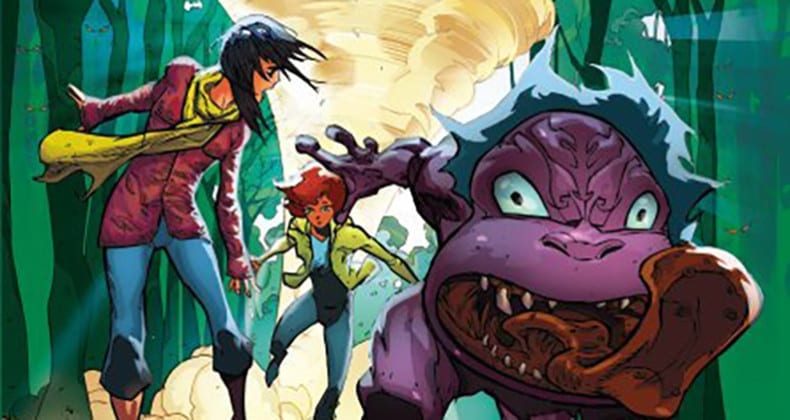Ghosts and literature often go hand-in-hand and Curtin’s Writing for Children lecturer Cristy Burne has forged an eclectic career from combining the two.
As the award-winning author of the popular children’s adventure series Takeshita Demons, Burne was inspired to write her first book when living in Japan by “a healthy fear of ghosts and a plastic mannequin’s head found in a rubbish bin.”
“I moved to Japan immediately after graduating from biotechnology,” she explains.
“I learned that some Japanese myths and monsters played a huge role in shaping society through their messages and warnings, but others existed merely to explain strange phenomena, like the feeling that someone is touching the back of your neck but, when you look, there’s no one there – that’s actually an Ushirogami.”
Takeshita Demons is a thrilling, fast-paced adventure series, which blends contemporary characters with powerful demons from Japanese folklore. With a wide appeal to children from the age of eight through to adults, the series won the Frances Lincoln Diverse Voices Children’s Book Award in 2009, and has since been published in five countries and three languages.
Following the success of the series, Burne has appeared as a guest at writers’ festivals including the Asian Festival of Children’s Content, Perth Writer’s Festival, Singapore’s Words Go Round and most recently at the UAE’s Sharjah Children’s Reading Festival.
“Stories have always been a way for readers to experience things outside of their ordinary life,” says Burne.
“They’re an important way to learn empathy, to encourage imagination and innovation, and to find joy, hope and inspiration from others’ stories … I think kids just need to find one or two books that speak to them and they’ll catch the bug.”

Writing a book for children, however, can be just as difficult as writing about atom smashing, or editing English translations of Japanese biotechnology patent applications – roles that Burne has taken up in the past.
“Children’s books have fewer words, which leads to the misconception that they’re easier to write, but the same is never said of poetry,” she says.
“Picture books, for example, must convey a compelling story – complete with character arcs, key plot points and a satisfying, emotional connection with adult and child readers – all in under 500 words, across 32 pages.”
Now teaching Writing for Children to Curtin students, Burne is enjoying the experience and hopes her students will learn “creativity, determination, a thick skin and a life-long addiction to making stuff from words.”
“Don’t get it right, get it written,” she says.
And aside from teaching, she is always searching for ideas for her next children’s book.
“Every experience, good or bad, embarrassing or hilarious, is fodder for a book. That’s the best part about being a writer!” she jokes.



